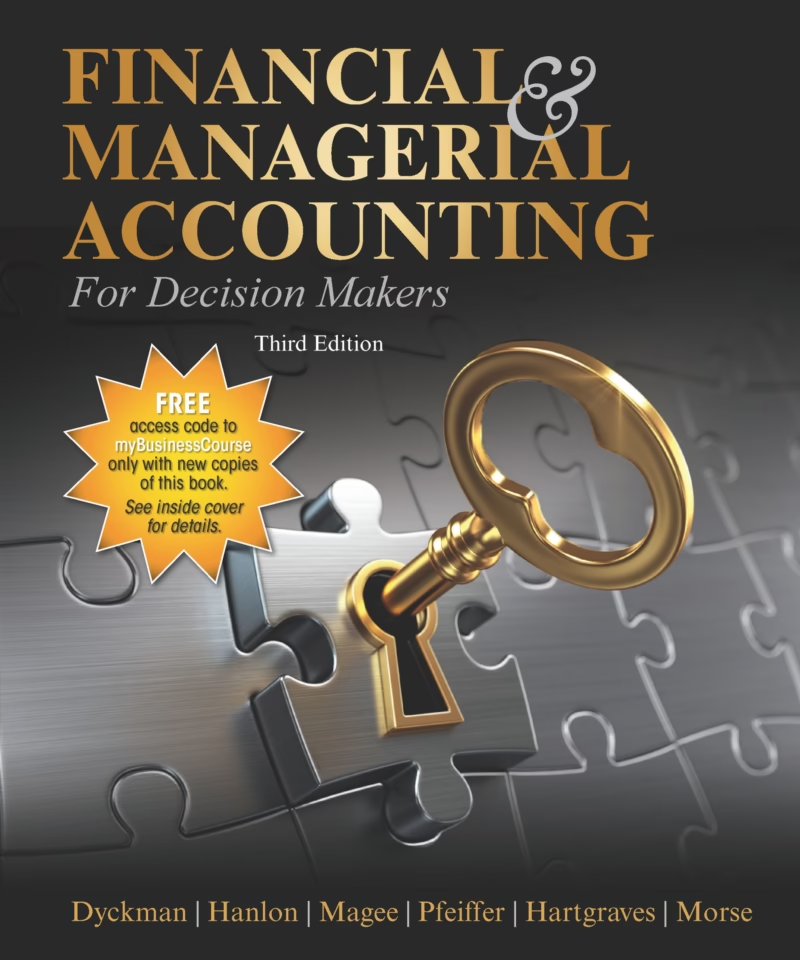Solution Manuals For South-Western Federal Taxation 2022: Comprehensive, 45th Edition James C. Young
$30.00 & Free Shipping
ISBN-10: 0357511018
ISBN-13: 9780357511015
© 2022
Free shipping on orders over $50!
- Satisfaction Guaranteed
- No Hassle Refunds
- Secure Payments
Description
- ProConnecct Tax
- Preface
- Brief Contents
- Contents
- Part 1: Introduction and Basic Tax Model
- Chapter 1: an Introduction to Taxation and Understanding the Federal Tax Law
- The Big Picture: Family and Taxes-A Typical Year
- 1-1: Approaching the Study of Taxation
- 1-2: A Brief History of U.s. Taxation
- 1-3: Tax System Design
- 1-4: Major Types of Taxes
- 1-5: Tax Administration
- 1-6: Understanding the Federal Tax Law
- Chapter 2: Working with the Tax Law
- The Big Picture: Importance of Tax Research
- 2-1: Tax Law Sources
- 2-2: Working with the Tax Law-Tax Research Tools
- 2-3: Working with the Tax Law-Tax Research
- 2-4: Working with the Tax Law-Tax Planning
- 2-5: Taxation on the CPA Examination
- Chapter 3: Tax Formula and Tax Determination; an Overview of Property Transactions
- The Big Picture: A Divided Household
- 3-1: Tax Formula
- 3-2: Standard Deduction
- 3-3: Exemptions
- 3-4: Dependents
- 3-5: Filing Status and Filing Requirements
- 3-6: Tax Determination
- 3-7: Tax Return Filing Procedures
- 3-8: Gains and Losses from Property Transactions-In General
- 3-9: Gains and Losses from Property Transactions-Capital Gains and Losses
- 3-10: Tax Planning
- Part 2: Gross Income
- Chapter 4: Gross Income: Concepts and Inclusions
- The Big Picture: Calculation of Gross Income
- 4-1: Gross Income
- 4-2: Timing of Income Recognition
- 4-3: General Sources of Income and to Whom They Are Taxed
- 4-4: Special Rules Related to Certain Items Included in Gross Income
- 4-5: Tax Planning
- Chapter 5: Gross Income: Exclusions
- The Big Picture: Exclusions
- 5-1: Income Exclusions
- 5-2: Gifts and Inheritances
- 5-3: Life Insurance Proceeds
- 5-4: Scholarships
- 5-5: Compensation for Injuries and Sickness
- 5-6: Employer-sponsored Accident and Health Plans
- 5-7: Meals and Lodging
- 5-8: Employee Fringe Benefits
- 5-9: Foreign Earned Income
- 5-10: Interest on Certain State and Local Government Obligations
- 5-11: Educational Savings Bonds
- 5-12: Education Savings Programs (§ 529 and § 530 Plans)
- 5-13: Qualified Able Programs (§ 529a Plans)
- 5-14: Income from Discharge of Indebtedness
- 5-15: Tax Benefit Rule
- 5-16: Tax Planning
- Part 3: Deductions and Credits
- Chapter 6: Deductions and Losses: In General
- The Big Picture: Calculation of Deductible Expenses
- 6-1: Classification of Deductible Expenses
- 6-2: Deductions and Losses-Timing of Expense Recognition
- 6-3: Disallowance Possibilities
- 6-4: Tax Planning
- Chapter 7: Deductions and Losses: Certain Business Expenses and Losses
- The Big Picture: Losses
- 7-1: Bad Debts
- 7-2: Worthless Securities and Small Business Stock Losses
- 7-3: Losses of Individuals
- 7-4: Research and Experimental Expenditures
- 7-5: Excess Business Losses
- 7-6: Net Operating Losses
- 7-7: Tax Planning
- Chapter 8: Depreciation, Cost Recovery, Amortization, and Depletion
- The Big Picture: Calculating Cost Recovery Deductions
- 8-1: Depreciation and Cost Recovery
- 8-2: Modified Accelerated Cost Recovery System (Macrs): General Rules
- 8-3: Modified Accelerated Cost Recovery System (Macrs): Special Rules
- 8-4: Reporting Procedures
- 8-5: Amortization
- 8-6: Depletion
- 8-7: Tax Planningtax Planning
- Chapter 9: Deductions: Employee and Self-employed-related Expenses
- The Big Picture: the First Job
- 9-1: Employee Versus Independent Contractor
- 9-2: Self-employed and Employee-Related Expenses-In General
- 9-3: Transportation Expenses
- 9-4: Travel Expenses
- 9-5: Education Expenses
- 9-6: Other Business Expenses
- 9-7: Contributions to Retirement Accounts
- 9-8: Individual Retirement Accounts (iras)
- 9-9: Retirement Plans for Self-employed Individuals
- 9-10: Classification of Employee Expenses
- 9-11: Limitations on Itemized Deductions
- 9-12: Tax Planning
- Chapter 10: Deductions and Losses: Certain Itemized Deductions
- The Big Picture: Impact of Itemized Deductions on Major Purchases
- 10-1: Medical Expenses
- 10-2: Taxes
- 10-3: Interest
- 10-4: Charitable Contributions
- 10-5: Timing of Payments to Maximize Deductions
- 10-6: Other Itemized Deductions
- 10-7: Comprehensive Example of Schedule a
- 10-8: Tax Planning
- Chapter 11: Investor Losses
- The Big Picture: Investor Loss Limitations Affect the Viability of Certain Investment Opportunities
- 11-1: The Tax Shelter Problem
- 11-2: At-Risk Limits
- 11-3: Passive Activity Loss Limits
- 11-4: Investment Interest Limitation
- 11-5: Other Investment Losses
- 11-6: Tax Planning
- Chapter 12: Tax Credits and Payments
- The Big Picture: Education Tax Credits
- 12-1: Tax Policy Considerations
- 12-2: Tax Credits
- 12-3: Specific Busines-Relate D Tax Credits
- 12-4: Specific Tax Credits for Individuals
- 12-5: Tax Credits Available to Busineses and Individuals
- 12-6: Tax Payments
- 12-7: Tax Planning
- Part 4: Property Transactions
- Chapter 13: Property Transactions: Determination of Gain or Loss, Basis Considerations, and Nontaxab
- The Big Picture:sale or Gift of Inherited House and Other Property Transactions
- 13-1: Determination of Gain or Loss
- 13-2: Basis Considerations
- 13-3: Nontaxable Exchanges
- 13-4: Like-kind Exchanges-§ 1031
- 13-5: Involuntary Conversions-§ 1033
- 13-6: Sale of a Residence-§ 121
- 13-7: Tax Planning
- Chapter 14: Property Transactions: Capital Gains and Losses, § 1231, and Recapture Provisions
- The Big Picture: Managing Capital Asset Transactions
- 14-1: General Scheme of Taxation
- 14-2: Capital Assets
- 14-3: Sale or Exchange
- 14-4: Holding Period
- 14-5: Tax Treat Ment of Capital Gains Andloses of Noncor Porate Taxpayers
- 14-6: Tax Treat Ment of Capital Gains and Loses of Corporate Taxpayers
- 14-7: Overview of § 1231 and the Reca Pture Provisions
- 14-8: Section 1231 Assets
- 14-9: Section 1245 Recapture
- 14-10: Section 1250 Recapture
- 14-11: Considerations Common to §§ 1245 and 1250
- 14-12: Special Recapture Provisions
- 14-13: Reporting Procedures
- 14-14: Tax Planning
- Part 5: Special Tax Computations and Accounting Periods and Methods
- Chapter 15: the Deduction for Qualified Business Income for Noncorporate Taxpayers
- The Big Picture Entrepreneurial Pursuits
- 15-1: Tax Treatment of Various Business Forms
- 15-2: The Tax Cuts and Jobs Act (tcja) of 2017 and Entity Tax Rates
- 15-3: The Deduction for Qualified Businessincome
- 15-4: Tax Planning
- Chapter 16: Accounting Periods and Methods
- The Big Picture: Accounting Period and Method
- 16-1: Accounting Periods
- 16-2: Accounting Methods
- 16-3: Special Accounting Methods
- 16-4: Inventories
- 16-5: Tax Planning
- Part 6: Corporations
- Chapter 17: Corporations: Introduction and Operating Rules
- The Big Picturea Half-baked Idea?
- 17-1: An Introduction to the Incometaxation of Corporations
- 17-2: Determining the Corporate Income Taxliability
- 17-3: Procedural Matters
- 17-4: Tax Planning
- Chapter 18: Corporations: Organization and Capital Structure
- The Big Picture: the Vehicle for Business Growth Is the Corporate Form
- 18-1: Organization of and Transfers Tocontrolledcorporations
- 18-2: Capital Structure of a Corporation
- 18-3: Investor Losses
- 18-4: Gain from Qualified Small Business Stock
- 18-5: Tax Planning
- Chapter 19: Corporations: Distributions Not in Complete Liquidation
- The Big Picture Taxing Corporate Distributions
- 19-1: Corporate Distributions-Overview
- 19-2: Earnings and Profits (E & P)
- 19-3: Dividends
- 19-4: Stock Redemptions
- 19-5: Stock Redemptions-Effect Onthe Corporation
- 19-6: Other Corporate Distributions
- 19-7: Tax Planning
- Chapter 20: Corporations: Distributions in Complete Liquidation and an Overview of Reorganizations
- The Big Picture: the Options for Transitioning to Retirement
- 20-1: Liquidations-In General
- 20-2: Liquidations-Effect on Thedistributing Corporation
- 20-3: Liquidations-Effect on the Shareholder
- 20-4: Liquidations-Parent-subsidiarysituations
- 20-5: Corporate Reorganizations
- 20-6: Tax Planning
- Part 7: Flow-through Entities
- Chapter 21: Partnerships
- The Big Picture: Why Use a Partnership, Anyway?
- 21-1: Overview of Partnership Taxation
- 21-2: Formation of a Partnership: Tax Effects
- 21-3: Partnership Operations and Reporting
- 21-4: Partner Calculations and Reporting
- 21-5: Other Taxes on Partnership Income
- 21-6: Distributions from the Partnership
- 21-7: Sale of a Partnership Interest
- 21-8: Limited Liability Entities
- 21-9: Tax Planning
- Chapter 22: S Corporations
- The Big Picture: Deductibility of Losses and the Choice of Business Entity
- 22-1: Choice of Business Entity
- 22-2: Qualifying for S Corporation Status
- 22-3: Operational Rules
- 22-4: Tax Planning
- 22-5: Overall Comparison of Formsof Doing Business
- Part 8: Advanced Tax Practice Considerations
- Chapter 23: Exempt Entities
- The Big Picture: Joseph Mucira/pixabayeffect of a For-profit Business on a Tax-exempt Entity
- 23-1: Types of Exempt Organizations
- 23-2: Characteristics of Exempt Entities
- 23-3: Taxes on Exempt Entities
- 23-4: Private Foundations
- 23-5: Unrelated Business Income Tax
- 23-6: Reporting Requirements
- 23-7: Tax Planning
- Chapter 24: Multistate Corporate Taxation
- The Big Picture: Making a Multistate Location Decision
- 24-1: Corporate State Income Taxation
- 24-2: Apportionment and Allocationof Income
- 24-3: The Unitary Theory
- 24-4: Taxation of S Corporations
- 24-5: Taxation of Partnerships and Llcs
- 24-6: Other State and Local Taxes
- 24-7: Tax Planning
- Chapter 25: Taxation of International Transactions
- The Big Picture:going International
- 25-1: Overview of International Taxation
- 25-2: Tax Treaties
- 25-3: Sourcing of Income and Deductions
- 25-4: Foreign Currency Gain/loss
- 25-5: U.S. Persons with Offshore Income
- 25-6: U.s. Taxation of Nonresident Aliensand Foreign Corporations
- 25-7: Reporting Requirements
- 25-8: Tax Planning
- Chapter 26: Tax Practice and Ethics
- The Big Picture: a Tax Adviser’s Dilemma
- 26-1: Tax Administration
- 26-2: The Tax Profession and Tax Ethics
- 26-3: Tax Planning
- Part 9: Family Tax Planning
- Chapter 27: the Federal Gift and Estate Taxes
- The Big Picture: an Eventful and Final Year
- 27-1: Transfer Taxes-in General
- 27-2: The Federal Gift Tax
- 27-3: The Federal Estate Tax
- 27-4: The Generation -skipping Transfer Tax
- 27-5: Tax Planning
- Chapter 28: Income Taxation of Trusts and Estates
- The Big Picture: Setting Up a Trust to Protect a Family
- 28-1: Fiduciary Income Taxation
- 28-2 Nature of Trust and Estate Taxation
- 28-3: Taxable Income of Trusts and Estates
- 28-4: Taxation of Beneficiaries
- 28-5: Grantor Trusts
- 28-6: Procedural Matters
- 28-7: Tax Planning
- A Trust or an Estate as an Income-shifting Device
- Income Tax Planning for Estates
- Distributions of In-kind Property
- Ethics & Equity Who Should Be a Trustee?
- Deductibility of Administrative Expenses
- Duties of an Executor
- Additional Taxes on Capital Gains and Netinvestment Income
- Refocus on the Big Picture Setting Up a Trust to Protect a Family
- Appendix A: Tax Formulas, Tax Rate Schedules, and Tables
- Appendix B: Tax Forms
- Appendix C: Glossary
- Appendix D: Table of Code Sections Cited
- Appendix E: Present Value and Future Value Tables
- Appendix F: Practice Set Assignments-Comprehensive Tax Return Problems
- Index
textbook





 Test Bank for Advanced Accounting, 4e by Hamlen
Test Bank for Advanced Accounting, 4e by Hamlen